Bad at Drawing
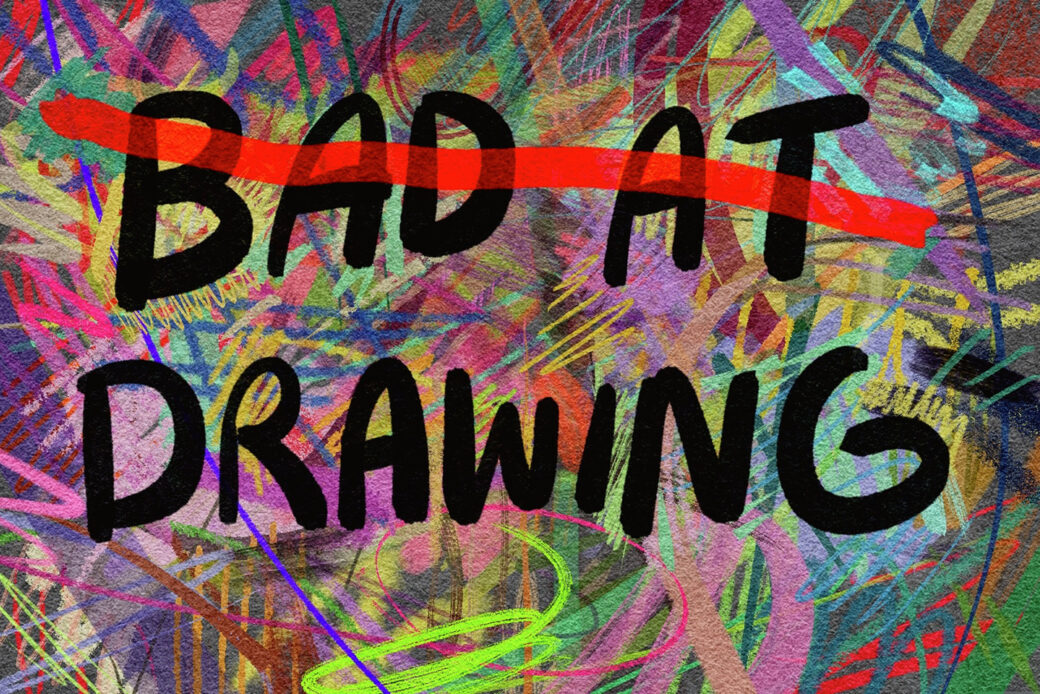

Bad at Drawing

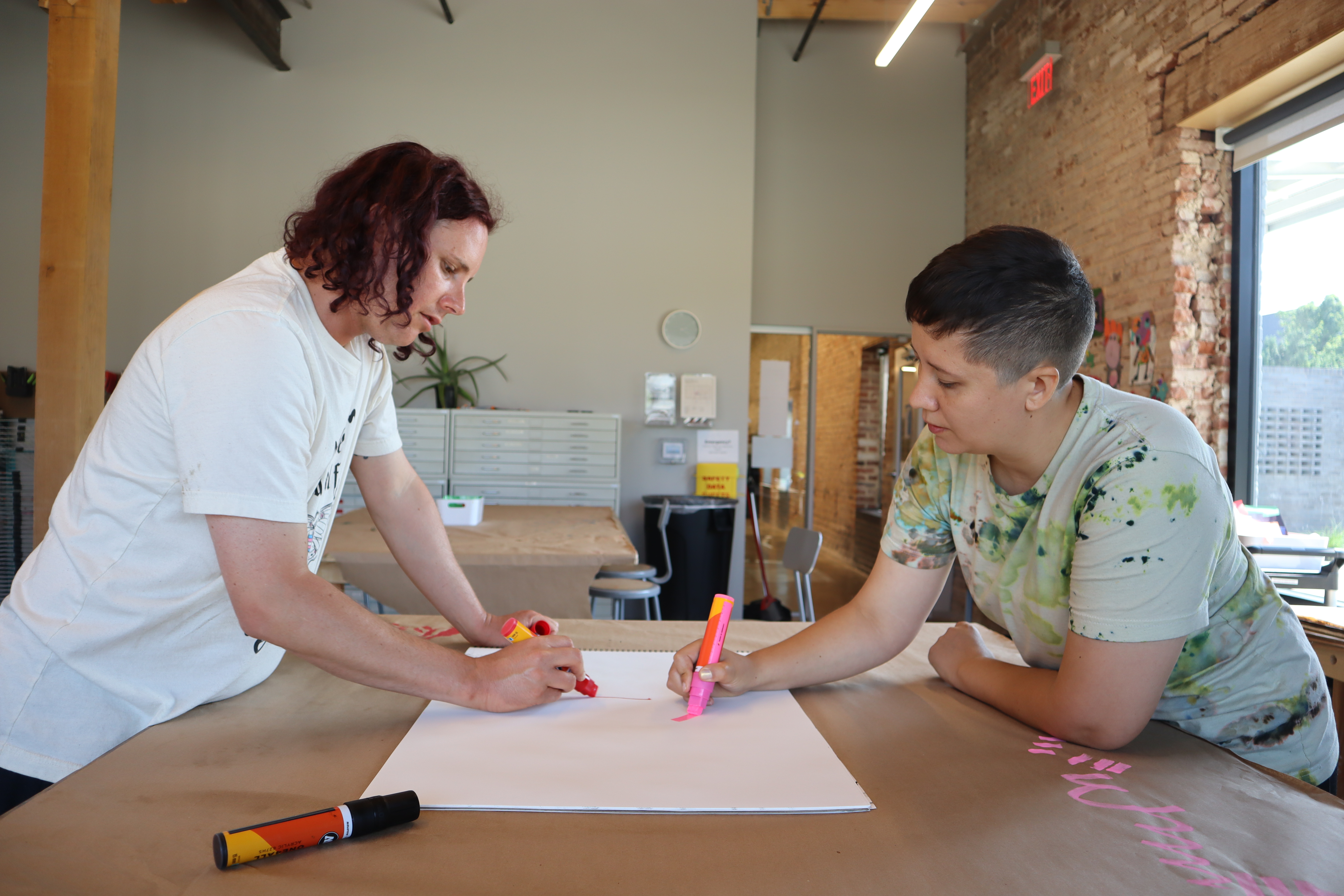
Dylan Cale Jones and Isa Rodriguez
What counts as “good” art? What counts as “bad”? For Studio School instructors Isa Rodriguez and Dylan Cale Jones, those types of definitions, especially in relation to art, serve as limitations made of arbitrary ideas. How can one be bad at art when art is meant for all? Cue Bad at Drawing, a series of Studio School classes by Rodriguez and Jones that challenge this notion of judgement or worth.
“I had the idea for bad at drawing as a class specifically that wasn’t about getting good at drawing,” Rodriguez says. “It’s a class where it’s OK to be bad at drawing or to make drawings that are weird or wacky or strange — that is allowed in our class.”
Moving from Chicago to Oklahoma City during the pandemic, the couple was in search of community, as many were and still are. Leaning into their work as artists, they found their way to Studio School. There, they embraced the artistic community among creative and like-minded individuals. Next step? Teaching a drawing class.

“I think there’s a lot of things we’ve been taught about how drawing should look and about how artists should look, and those things don’t include everyone,” Rodriguez says. “So I’m interested in making art in a way and teaching art in a way that includes everybody. Regardless of their skill level, regardless of what their art looks like — I want to live in a world where everyone can be an artist.”
This “everyone can make art, and art is for everyone” sentiment is the foundation of Bad at Drawing.
“We’ve based our class off of three main ideas,” Jones says. “The first idea is that drawing is a verb; drawing isn’t the finished thing that you draw, it’s the process of making a drawing.”
“Drawing is the act of drawing,” Rodriguez says. “The second thing is that everyone can draw. Drawing is an act that everyone can do, whatever their body is like, whatever their brain is like, there’s a way that they can draw; they can do that action.”
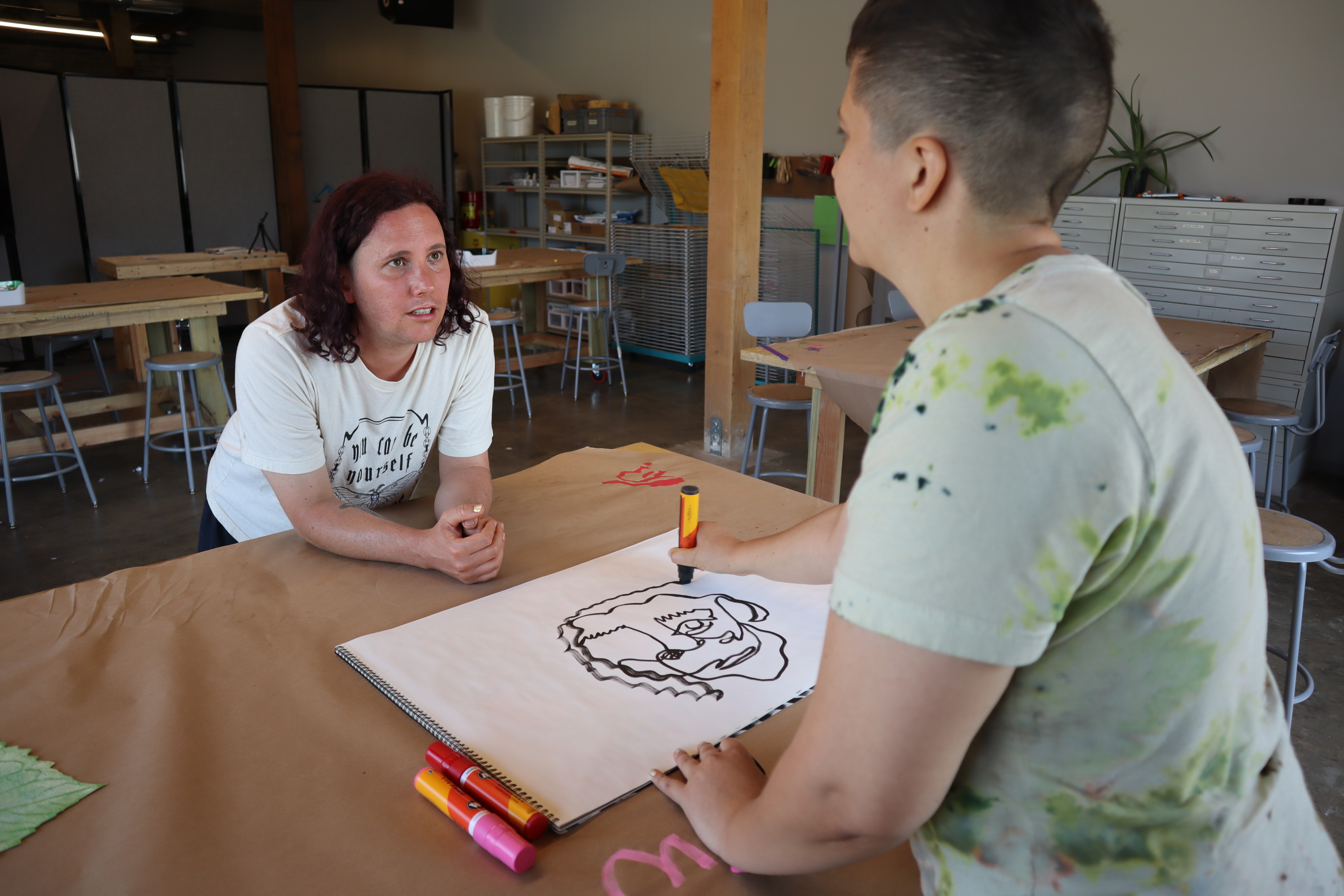
Rodriguez draws Jones' portrait
“And the third idea is that no drawing is good or bad,” Jones says. “Good and bad are limits that are made up … and they don’t actually help us. They don’t help us draw, they don’t help us do much of anything. What we notice is, people often freeze when they start worrying whether their drawings are good or bad.”
In order to combat these ideological interpretations of the right way to draw, the right way to make art, the right way to make “good” art, the two instructors challenge their students through various exercises that leave no room for anything other than the act of putting pen/pencil/marker to paper.
“Something that we do in our class a lot is get our students to give up their sense of control over their drawing,” Jones says. “So we do that by having them draw really fast.”
“Or draw without looking at the paper, draw with your eyes closed, draw with your left hand,” Rodriguez says.
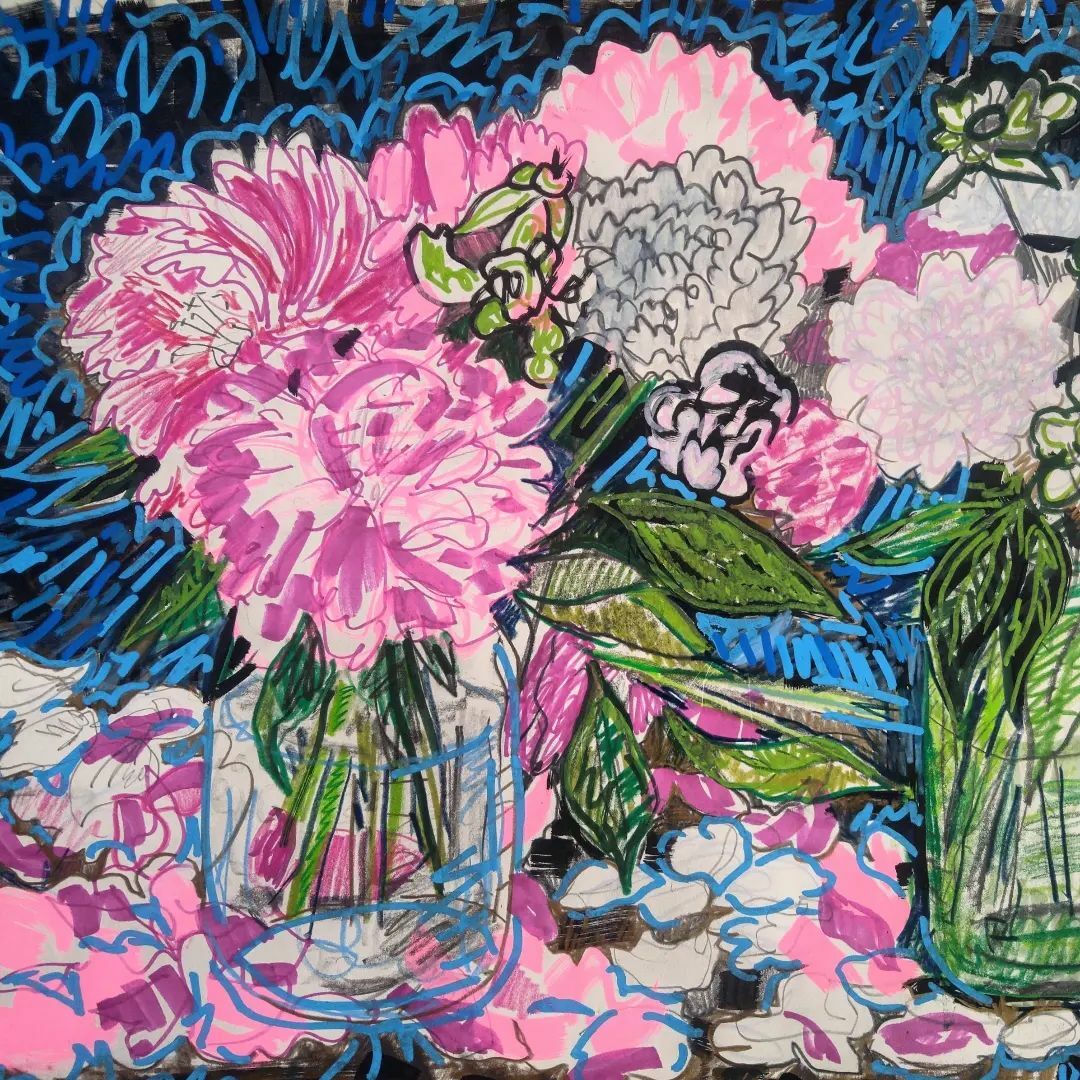
Rodriguez' flower drawing
“And a lot of times when we do that, students end up being really surprised at what the results are,” Jones says. “[They surprise] themselves at how much they like what they’ve drawn when they sort of loosen up and stop worrying about what it is that they’re drawing, or don’t have the opportunity to worry about what they’re drawing.”
This summer, both Rodriguez and Jones are teaching Bad at Drawing classes, this time independently. Rodriguez’ four-week Bad at Drawing: Flowers kicks off Studio School’s first summer session, teaching students to contour draw, trace, collaborate and use mixed media. Jones’ four-week Bad at Drawing: Portraits leads the way in second session, and students will take a playful approach to drawing faces and features through tearing, splattering, scribbling and scrawling expressive portraits.
“When I was young, I got interested in art because I was captivated by portrait paintings that I saw at the Art Institute of Chicago, that were kind of canonical portrait paintings,” Jones says. “But what I was really attracted to were paintings by artists like Ludwig Meidner and Otto Dix and a lot of German expressionists that have this sort of warped, distorted way of drawing portraits, less so than classical or ‘realistic’ portraiture.”
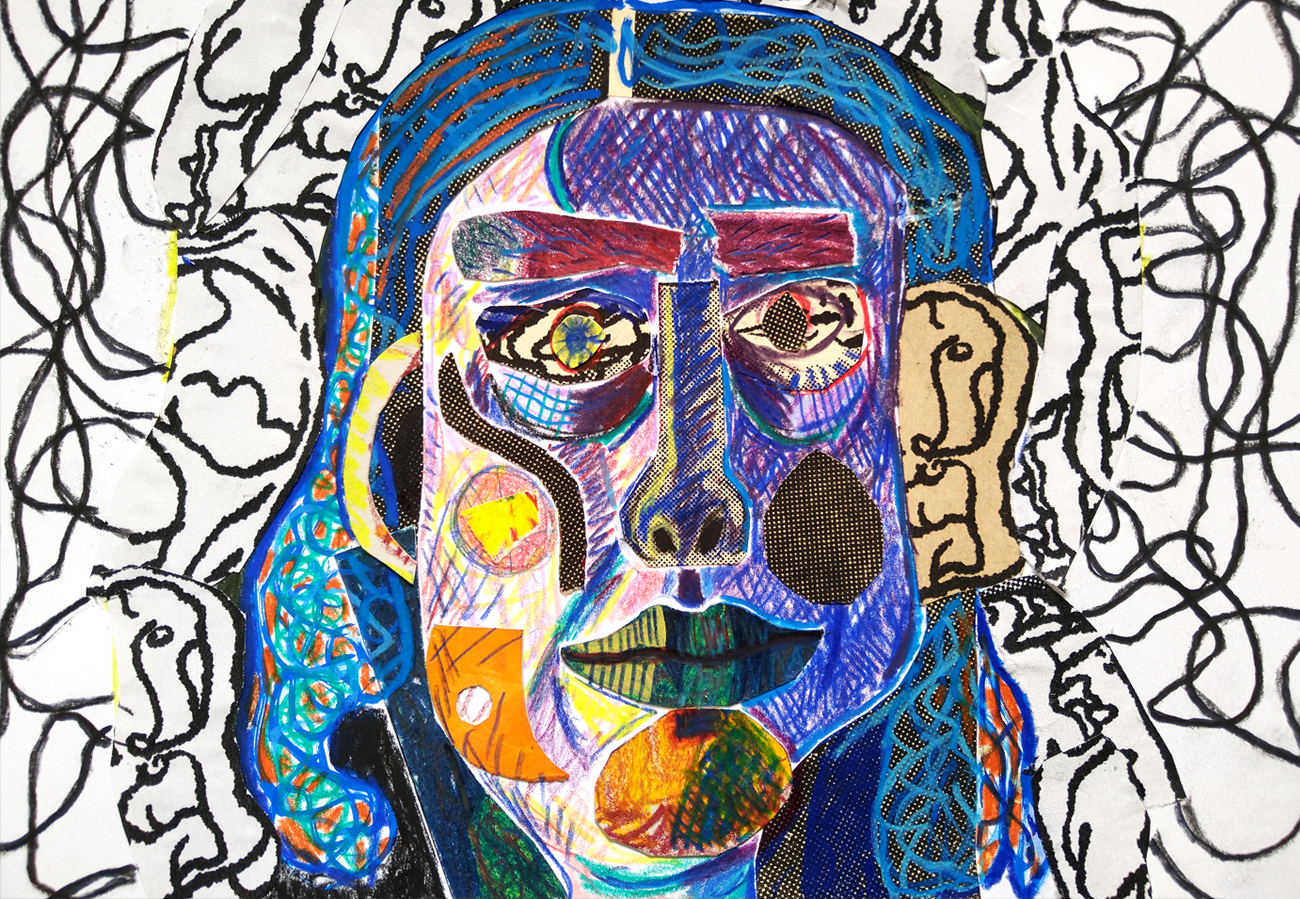
Jones' portrait
“I think that there’s something really powerful about faces. Right? Human beings learn so much by looking at other people’s faces — that’s why I think they’re drawn so much and photographed and painted so much. So I want to give people the opportunity to feel like they can do that. Because it doesn’t have to be a photorealistic portrait or a Renaissance-style portrait to be meaningful or attractive or exciting, it can actually be really simple or really strange. It doesn’t have to be hard, and it doesn’t have to be scary.”
Think you’re bad at drawing? Think again, friends! Whimsical realities, faraway lands and imaginative happenings are right at your fingertips, waiting to come to life with the simplest of strokes.
“All the marks that you make carry meaning and create things,” Rodriguez says. “It’s so immediate — it’s such an immediate way to create something, such an immediate way to change your world.”
Registration for Studio School’s first summer session closes Friday, July 7. Be quick — classes and workshops are filling fast. Find creative freedom and challenge your own notions of good vs. bad art.
Images:
Isa Rodriguez and Dylan Cale Jones' Bad at Drawing. Image courtesy the artists.
Jones and Rodriguez practice drawing together.
Studio School students' collaborative drawing practice in Bad at Drawing spring 2023. Photo: Emily Farris.
Rodriguez draws Jones' portrait.
Rodriguez' flower drawing. Image courtesy the artist.
Jones' portrait. Image courtesy the artist.
Return to New Light.
Monday 11 a.m. - 6 p.m.
Closed Tuesday
Wednesday 11 a.m. - 6 p.m.
Thursday 11 a.m. - 9 p.m.
Friday - Sunday
11 a.m. - 6 p.m.
see additional holidays
Visit us at
11 NW 11th St.
Oklahoma City, OK 73103
Phone: 405 951 0000
Fax: 405 951 0003
info@okcontemp.org
SEND MAIL TO
Oklahoma Contemporary
P.O. Box 3062
Oklahoma City, OK 73101
STAY UP TO DATE
Join our mailing list to learn about our events, exhibitions, education and more.
©2024 Oklahoma Contemporary All Rights Reserved.